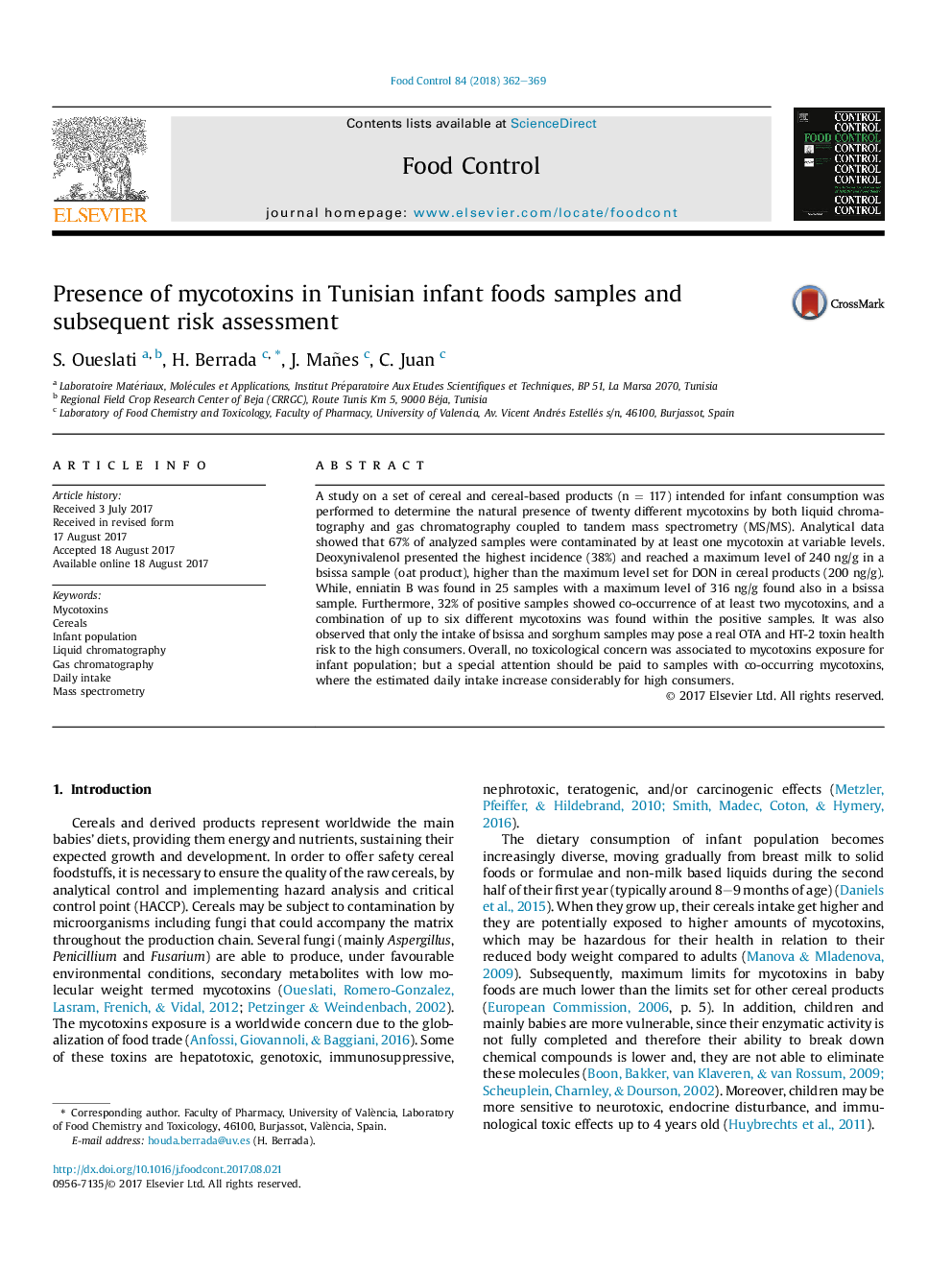| Article ID | Journal | Published Year | Pages | File Type |
|---|---|---|---|---|
| 5767319 | Food Control | 2018 | 8 Pages |
â¢First survey on the mycotoxins presence in cereal baby food from Tunisia.â¢67% of analyzed samples were contaminated by at least one mycotoxin at variable levels.â¢DON had the highest incidence (38%) with a maximum level of 240 ng/g in a bsissa sample.â¢32% of positive samples showed co-occurrence of at least two mycotoxins.â¢No toxicological risk was registrated for infant consumers in Tunisia.
A study on a set of cereal and cereal-based products (n = 117) intended for infant consumption was performed to determine the natural presence of twenty different mycotoxins by both liquid chromatography and gas chromatography coupled to tandem mass spectrometry (MS/MS). Analytical data showed that 67% of analyzed samples were contaminated by at least one mycotoxin at variable levels. Deoxynivalenol presented the highest incidence (38%) and reached a maximum level of 240 ng/g in a bsissa sample (oat product), higher than the maximum level set for DON in cereal products (200 ng/g). While, enniatin B was found in 25 samples with a maximum level of 316 ng/g found also in a bsissa sample. Furthermore, 32% of positive samples showed co-occurrence of at least two mycotoxins, and a combination of up to six different mycotoxins was found within the positive samples. It was also observed that only the intake of bsissa and sorghum samples may pose a real OTA and HT-2 toxin health risk to the high consumers. Overall, no toxicological concern was associated to mycotoxins exposure for infant population; but a special attention should be paid to samples with co-occurring mycotoxins, where the estimated daily intake increase considerably for high consumers.
